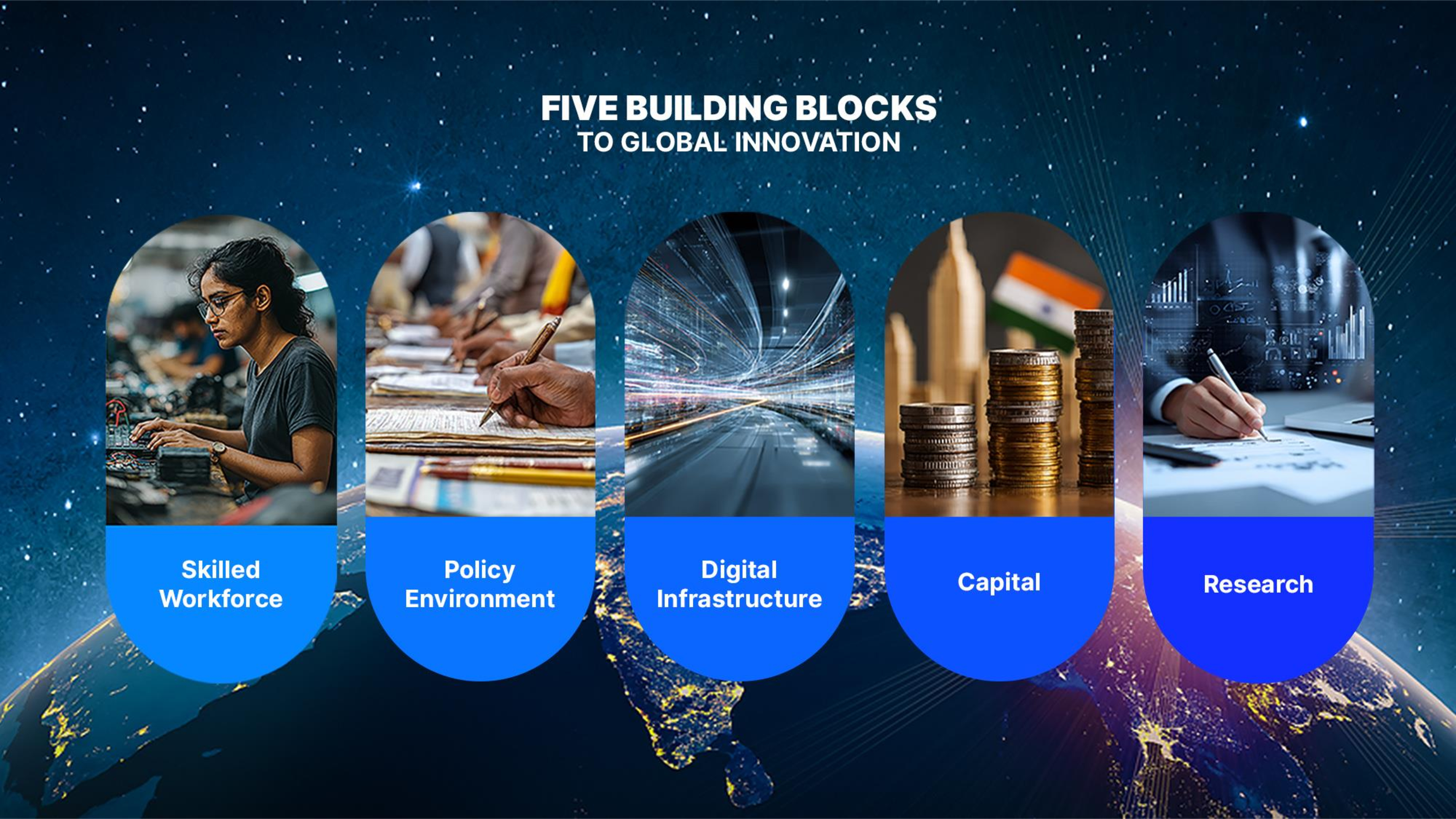The India Flywheel: How This AI Race Could Be India's to Lead
India has long been the driving force behind global technology. But AI changes the equation. It needs context, infrastructure, and the ability to move from experimentation to deployment at scale.
India has long been the driving force behind global technology - deepening engineering strength, scaling enterprise platforms, and building the backbone of modern digital operations. Over decades, we've moved from early experimentation to a thriving ecosystem of startups, GCCs, and global tech talent.
But AI changes the equation. It doesn't just need people. It needs context - an understanding of real-world workflows. It needs infrastructure, capital, and the ability to move from experimentation to deployment at scale. And quietly, over time, India has built many of these capabilities.
The question now isn't whether we have the potential. The question is - will we lead?
Chapter Navigation
The Compounding Decades
The Compounding Decades

In the 1970s, as the West experimented with personal computers, India was just emerging from centuries of colonial rule. Our premier institutes were beginning to establish computer science departments. While the U.S. built the foundations of Silicon Valley, India was taking its first steps in offshoring - laying the groundwork for what would become a global tech services industry.
In the internet era, as American companies created billion-dollar consumer platforms, India's policymakers focused on enabling industries that could scale within infrastructure constraints. While the U.S. was building Googles and NVIDIAs, we were setting the stage for our own entrepreneurial ecosystem.
In the early 2010s, when NASSCOM published its first startup report, India had just 600 startups. Today, we have over 32,000. And in the last few years alone, more than USD 65 Bn in venture capital has flowed into Indian startups.
The gap in timing was real. But what India built during that time was foundational - an ecosystem of talent, services, digital infrastructure, and policy momentum. What seemed like a delayed start has now become a deep reservoir of capability.
India didn’t get here by accident. It took decades of quiet, deliberate buildup — from telecom towers to fiber highways, from engineering talent to a world-class digital public infrastructure stack. We’re now the second-largest tech talent pool in the world, and the number one for English-speaking digital workers. It’s why even the smallest global firms want to set up GCCs in India. We’re projecting 10,000 of them by 2030.
This is the foundation India stands on today. But the next leap will require a different kind of playbook.
Keynote Preview
Get a glimpse of the key insights from India's AI leadership keynote presentation

Ready to explore the complete keynote and data points that shaped this perspective?

Pari Natarajan
Pari Natarajan, CEO of Zinnov, helps tech companies boost engineering efficiency and innovation through effective globalization strategies.
SPEAK WITH OUR CONSULTANTS
Connect with our experts to discuss your AI strategy and digital transformation journey